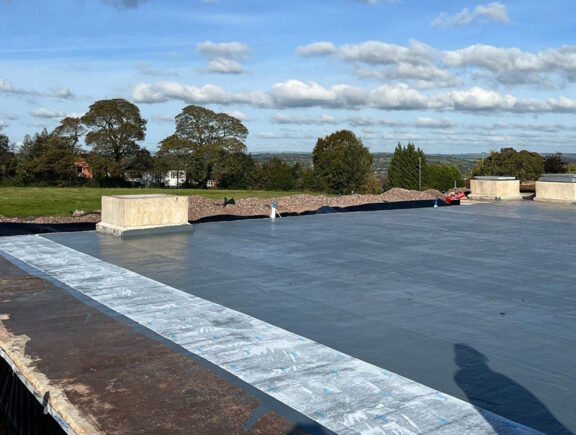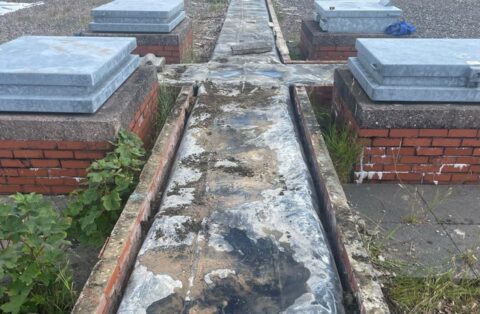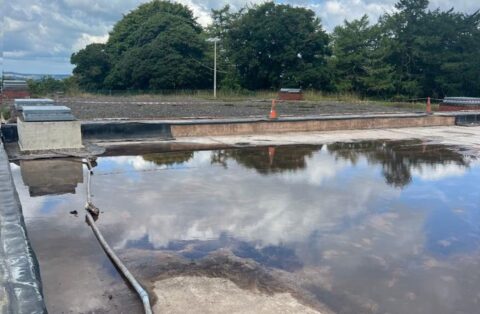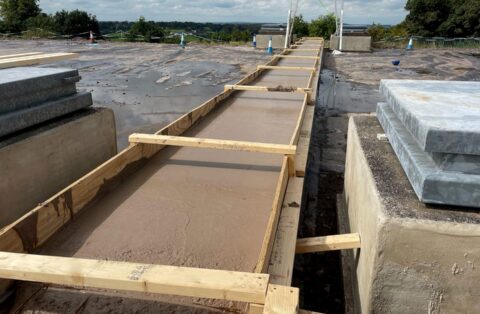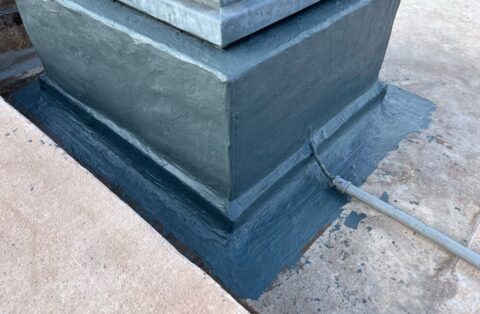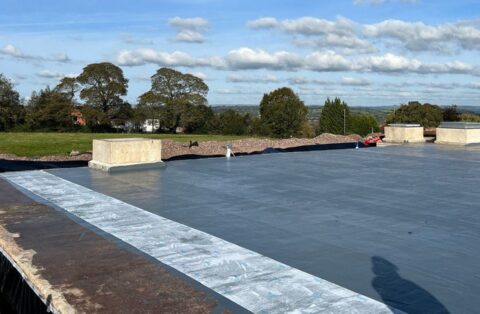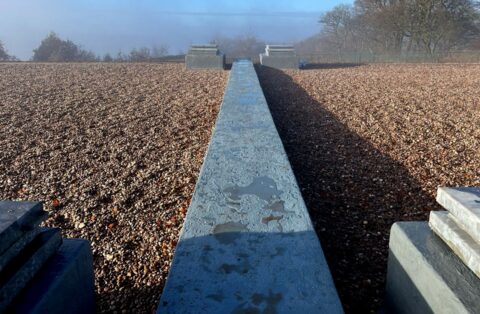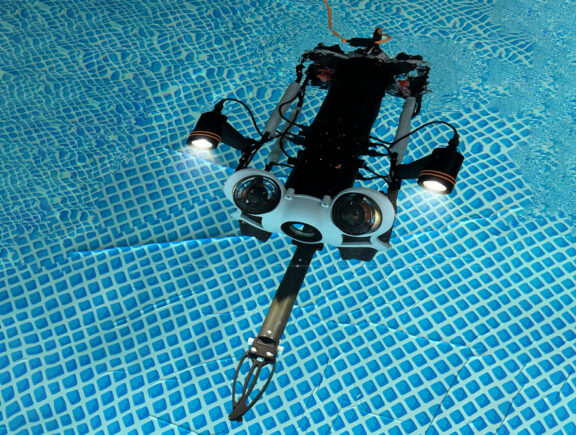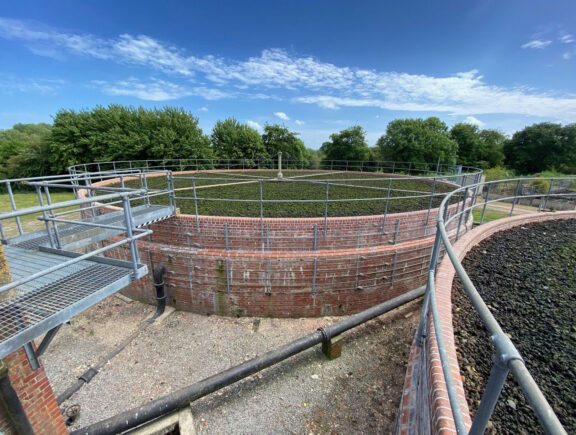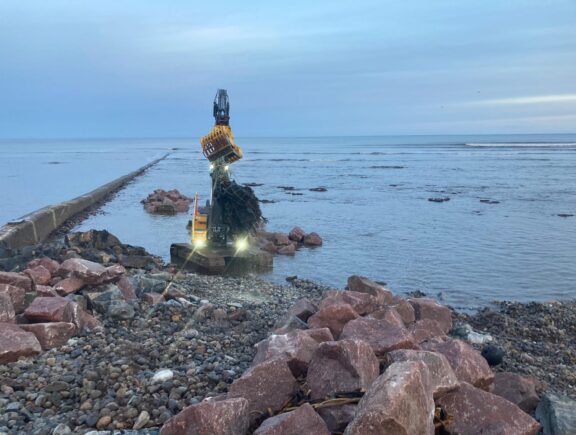Stonbury provided two solutions for the client to address the ponding. One option included installing a new screed across all four cells to shed the water off the roof. However, this came at a considerable cost for the client. A much cheaper option was to install a liquid membrane system that the water could settle on without causing further problems.
The liquid membrane was the favourable option, as in addition to the cost savings, it worked in conjunction with the plans to remove the loose slabs over the drain voids and replace them with new stainless steel slabs and a concrete cast pathway, allowing the membrane to be installed as a continuous system across all four cells.
Despite several challenges, including changes to the scope and delays to the programme, Stonbury managed staffing and procurement of materials and plant to deliver the refurbishment in a timely and cost-effective manner.
Before installing the solution, the team completed roof repairs, overbanding, render application and the new walkways. Following successful patch and pull-off tests for the liquid membrane, the water-tight system was installed across the roof of all four cells. Minor concrete repairs and pipework removal was conducted internally.
The refurbishment was completed within twenty-one weeks, well in advance of the thirty-two-week programme. The client was delighted.
